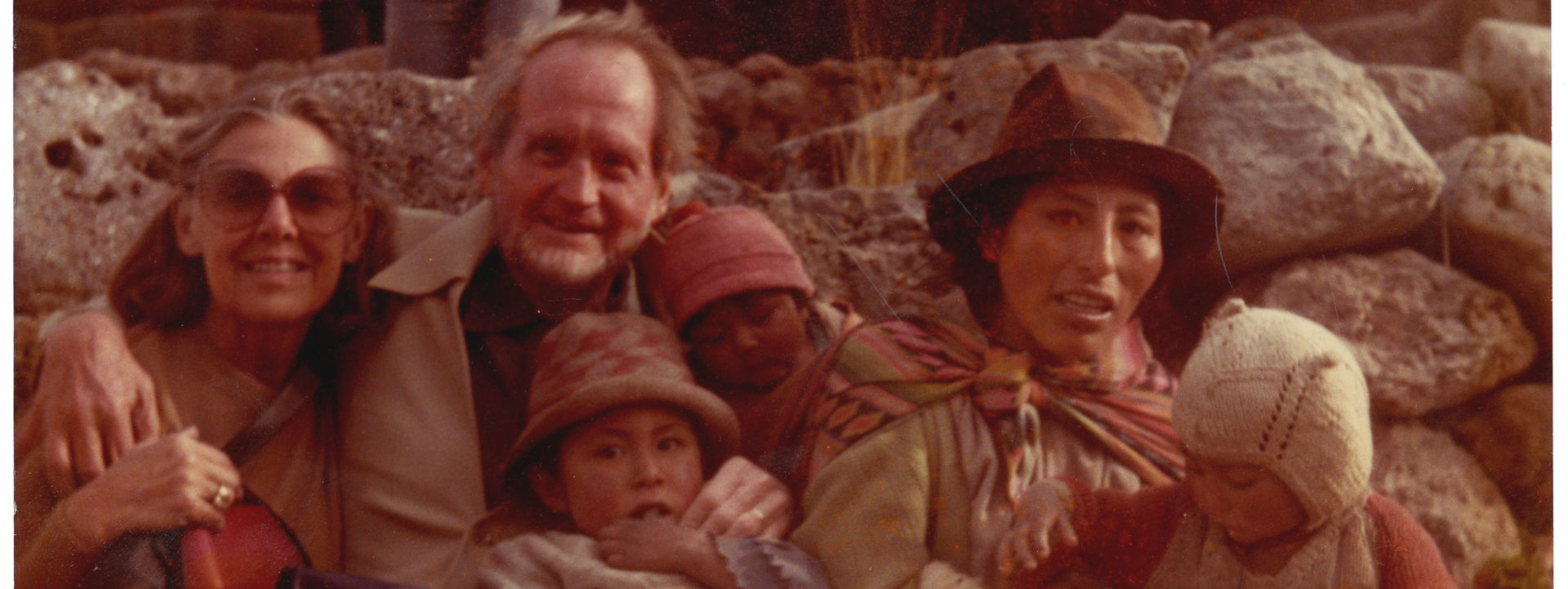Although Sybil visited Iran in 1975, this particular journal was written several years after her visit, as we see her describing events that occurred in 1979. Whether Sybil wrote a day to day journal while visiting Iran like her other journals is unknown however, we can learn much from this particular journal. This five-page journal instead works as a history essay. Titled Khalif of Khomein or a spiritual leader of Islam in the city of Khomein, or Khomeyn, the journal begins with a description of Persepolis, the ceremonial capital of the Achaemenid Empire. Given her description of Persepolis we can assume the ruins of Persepolis were a destination on her trip through Iran. Sybil continues on the subject of Persepolis, explaining a party in 1971 set up by the last Shah, the title given to the monarchs of Iran. “The purpose of the $100,000 panoply of pomp and glory”, she writes, “was as medieval as its style: to emphasize the legitimacy of the ruling dynasty and to draw the attention of the world to Iran’s exceedingly traditional greatness.” Sybil explains that a reform was put into place called the “White Revolution”, intended to address land reform, literacy, health, and profit-sharing. We can assume by the name given to the revolution that this reform was a push towards Western norms. Despite any good intentions, the people of Iran responded honestly, “Look at our miserable villages and even the streets… There’s enough practical work for us to do without such nonsense.” When considering their concerns, the people have a point. Through the reform, farming suffered, irrigation neglected, and two thirds of the population remained illiterate. Worst of all, the city had no sewer system.
A plan to overthrow the Shah quickly gained momentum and in 1979 a Shiite leader, or an Ayatollah, from the city of Khomein rose to power. Sybil describes Ayatollah Ruhollah Khomeini as resembling a saint sitting under an apple tree listening to a sitar while having prophetic visions. “Paradoxically,” she writes, “this holy man reverberates the color and drama of past armed conflicts.” She continues to give a quick bio of Khomeini, where he comes from and how he came to popularity.
Sybil closes this journal on an optimistic note. Since the politics of Iran are still heated when she is writing this, Sybil calls for a time when Iran will once more be able to enjoy what makes their culture beautiful instead of political drama that splits the country into pieces. She ends this journal with an ode to their culture, “We want once again to hear the tales of Scheherazade.”
Opting to write an essay over a typical travel journal may seem out of the norm, however to Sybil, Iran is a fairly unfamiliar country. What she knew about the country before visiting would have been limited to news headlines. After visiting Iran, Sybil found a source of new knowledge and decided to articulate that knowledge in a formal way. Since this country was so unfamiliar, choosing instead to highlight the history instead of her own journey shows how Sybil defies the colonialist backdrop. Instead of explaining how she, a tourist from a Western dominated country, interrupted this Iranian landscape to bring an American view, she chose instead to highlight the current happenings of a not-so-Western-dominated country. What is important here to Sybil is that the reader understands current issues of a country that may fly under the radar for most. This is important to Sybil because Iran, to her, is another wonderful place full of beautiful culture.
In her ending paragraph, Sybil closes with the line of wanting to hear Scheherazade again. Scheherazade could be considered one of the most famous characters of Middle Eastern literature, she was the wife of Shahryar, a monarch that would kill his wife and remarry every night in order to avoid being cheated on. Scheherazade saved her life by telling Shahryar a story every night, stopping before the ending so the monarch was forced to wait another day to hear the end. By saying that she wants to once again hear the tales of Scheherazade, Sybil offers a view of Iran as a country in need of negations and political change, needing to find peace in order to give their culture the spotlight it deserves. This once again draws in her influence of artwork. Sybil appreciates the art and culture of Iran, however also believes the art and culture can’t be successfully appreciated by others until their political tensions are resolved.
